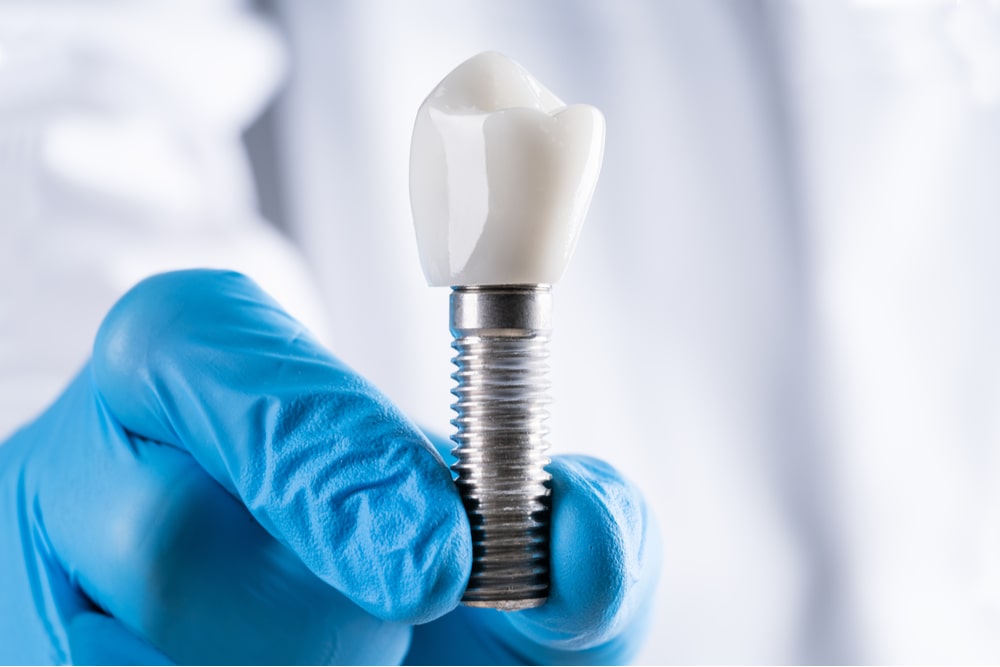When we’ve had to have a tooth removed, it’s not uncommon to wish it could be replaced. While bridges and dentures have been the go-to solutions, dental implants are taking the lead. Dental implants are an effective and aesthetically pleasing way to restore smiles, even when multiple teeth are missing. More than restoring missing teeth, they can actually strengthen the jawbone.
How Dental Implants Restore Your Smile
One of the underlying benefits of dental implants lies in using titanium for mounting points. Titanium screws are implanted into the jawbone, which is used to mount the abutment and crowns. Titanium has the unique property of stimulating natural bone growth. Even more importantly, this material eventually undergoes osseointegration, becoming a permanent part of your jawbone. This property of titanium was first realized by the man who invented the hip replacement.
This process of osseointegration helps to strengthen your jawbone over time. These implants stay firmly in place over a lifetime, serving as a stable mount for your implants. Together these properties make them the preferred dental restoration option. Implants tend to require a larger up-front investment than other restorations. However, their durability, long lifetime, and ability to strengthen the oral structures make them a sound investment.
- Security – There is no concern about your implants slipping out of place as there is with dentures. The replacement crowns will stay firmly in place, providing a more natural chewing and speaking experience. Most patients report that there is no perceptible difference once they get used to having them. Unlike dentures, you don’t have to remove them to clean them; you simply brush them like your natural teeth. This eliminates the risk of dropping and breaking them that you have with dentures.
- Durability – Your dental implants are intended to stay with you for a lifetime. Most restoration options have a limited lifespan and will need to be repaired or replaced over time. It could be necessary to replace the crowns once every couple of decades, but your implants will persist.
- Oral Health – Caring for your dental implants is as simple as caring for your natural teeth. You will continue to brush and floss as normal and use mouthwash.
These properties make dental implants a popular option for dental restoration. The combination of being easy to care for, natural appearance, and improving oral health make them an obvious choice.
Learn More About Dental Implants
Receiving dental implants is performed as an outpatient procedure. However, you’ll need to be placed under anesthesia to complete the procedure. Many patients report that local anesthesia is sufficient to complete the procedure. Getting dental implants is a multi-stage procedure in most cases. An incision will be done in your gum to gain access to the jawbone. A hole will be drilled into the jawbone in preparation for placing the titanium screw. The gum will be stitched up and allowed to heal for a few months. Once healed, you’ll come in for another appointment to have the abutments paced. A shorter healing period will pass before the final crowns are placed on these mounts.



